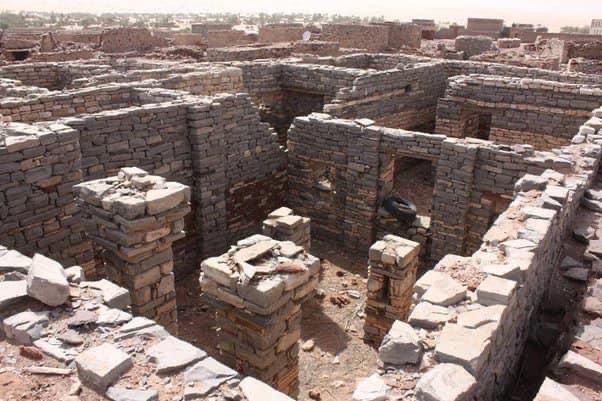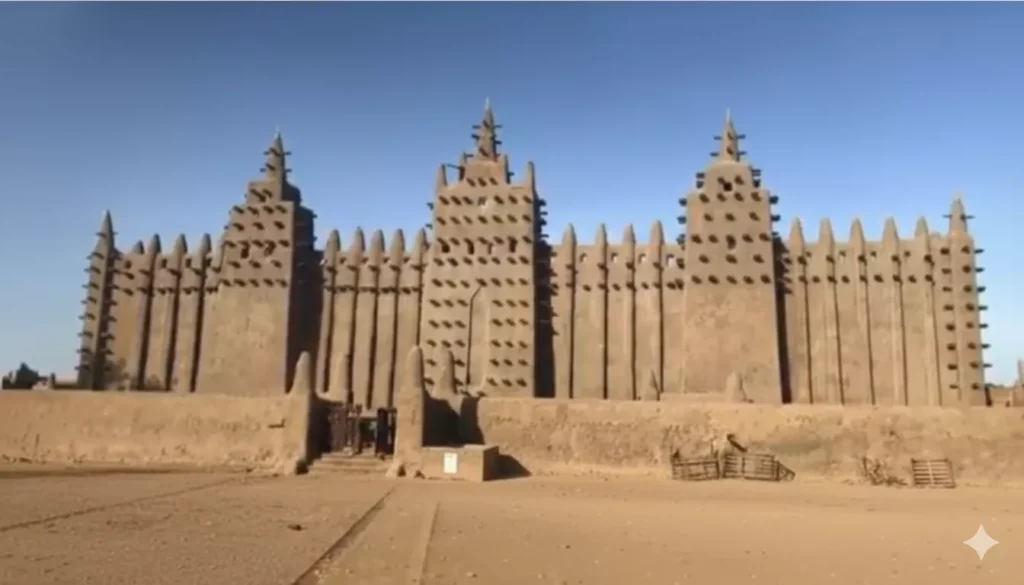Koumbi Saleh
The Lost Capital of the Ancient Ghana Empire
In the arid expanse of southeastern Mauritania lies Koumbi Saleh, a city that once thrived as the heart of the ancient Ghana Empire. Today, it stands as a silent testament to the grandeur of a civilisation that flourished over a millennium ago. The site offers a rare glimpse into West Africa’s rich history, showcasing the empire’s wealth, culture, and its pivotal role in trans Saharan trade routes.
Historical Significance
The Ghana Empire: A Brief Overview
The Ghana Empire, also known as the Wagadou Empire, flourished from approximately the 3rd century to the 13th century CE in the western Sahel region, encompassing parts of present day Mauritania and Mali. Renowned as the “Land of Gold,” the empire’s prosperity was anchored in its strategic control over the trans Saharan trade routes, facilitating the exchange of gold, salt, and other valuable commodities. Its capital, Koumbi Saleh, epitomised the empire’s zenith in politics and economics.
Koumbi Saleh: The Dual City Capital
According to the 11th century Arab geographer Al Bakri, Koumbi Saleh comprised two distinct towns situated approximately six miles apart:
- Al Ghaba (The King’s Town): This area housed the royal palace, administrative centres, and religious structures.
- The Muslim Town: A bustling marketplace and residential area for Muslim merchants, featuring twelve mosques and vibrant trade activities.
These descriptions align with archaeological findings, confirming Koumbi Saleh’s status as the capital of the Ghana Empire

Archaeological Discoveries
Excavations and Findings
The ruins of Koumbi Saleh were first reported in 1914 by French explorer Albert Bonnel de Mézières. Subsequent excavations between 1949 and 1981 revealed a well organised urban centre, divided into:
- The Royal District: Featuring the Great Mosque, royal residences, and a unique column tomb.
- The Commercial District: Home to market areas, workshops, and additional mosques.
The Column Tomb
The Column Tomb is a unique structure dating from the 11th to 13th centuries. It features a square inner vault supported by four columns. Radiocarbon dating places its construction between 1048 and 1251 CE, offering valuable insights into the funerary practices of the era.
The Great Mosque
One of the most significant finds is the Great Mosque, measuring approximately 46 meters by 23 meters. Constructed from stone and mudbrick, it showcases the architectural prowess of the time. Decorative elements, such as Quranic inscriptions on painted slate slabs, reflect the strong influence of Islam on the city’s culture.

Cultural and Religious Influence
Islam played a pivotal role in shaping the culture of Koumbi Saleh. The presence of numerous mosques and Islamic artefacts points to the deep integration of Islam into daily life. The city’s architecture adhered to Islamic urban planning principles, with buildings oriented towards Mecca and communal spaces dedicated to prayer. This fusion of indigenous traditions with Islamic practices fostered a unique cultural identity that permeated all aspects of life in Koumbi Saleh.
Decline and Abandonment
The decline of Koumbi Saleh resulted from several factors:
- Almoravid Invasion (11th Century): The Almoravid dynasty disrupted the region’s political stability.
- Environmental Changes: Shifts in climate may have affected the city’s ability to sustain itself.
- Malian Conquest (13th Century): The rise of the Mali Empire led to the absorption of the Ghana Empire, including Koumbi Saleh.
By the 14th century, the city was largely abandoned, its once thriving markets and grand structures succumbing to the sands of time.
UNESCO Recognition
Recognising its historical and cultural significance, Koumbi Saleh was added to the UNESCO World Heritage Tentative List on June 14, 2001, under the official name Archaeological Site of Koumbi Saleh. This inclusion underscores the importance of the site and the need for continued preservation efforts to protect this invaluable piece of West African heritage.
Visiting Koumbi Saleh Today
Location and Access
Koumbi Saleh is situated about 30 kilometres north of the Malian border in Mauritania’s Hodh Ech Chargui region. Access to the site typically requires off road transport, and visitors often travel through Nara, Mali, to reach it. The journey offers a unique opportunity to experience the Sahelian landscape and the rich history embedded in the region.
Visitor Experience
A visit to Koumbi Saleh is a journey into history. Tourists can explore the Great Mosque, the Column Tomb, and other ruins that tell the story of a once thriving metropolis. The surrounding landscape, characterised by its vastness and tranquillity, adds to the historical ambience, offering a quiet and reflective atmosphere for visitors.
Challenges and Preservation
Despite its UNESCO recognition, the site faces threats from erosion, sandstorms, and limited preservation resources. Ongoing efforts are necessary to protect this valuable site for future generations. Collaborations between local authorities, international organisations, and the global community are crucial in ensuring the conservation of Koumbi Saleh’s rich heritage.
Conclusion
Koumbi Saleh is more than just an archaeological site; it is a monument to the glory of the Ghana Empire and a powerful reminder of the rich history of West Africa. As research continues to uncover more details, Koumbi Saleh will remain a key site for understanding the cultural and historical developments of the region. Its preservation is not only vital for historical scholarship but also for honouring the legacy of a civilisation that once stood at the crossroads of Africa’s great empires
Frequently Asked Questions
What is the historical significance of Koumbi Saleh?
Koumbi Saleh was the capital of the Ghana Empire, a major trade centre for gold and salt and a hub of Islamic scholarship.
When was Koumbi Saleh abandoned?
The city declined in the 11th century and was abandoned by the 14th century.
What are the main architectural features of Koumbi Saleh?
The Great Mosque and the Column Tomb are among the most notable architectural features.
Is Koumbi Saleh a UNESCO World Heritage Site?
Yes, it was added to the UNESCO World Heritage Tentative List in 2001.
What challenges does Koumbi Saleh face today?
Erosion, sandstorms, and the lack of sufficient preservation resources threaten the site.
How can one visit Koumbi Saleh?
The site can be reached from Nara, Mali, by off-road transport.
What is the best time to visit Koumbi Saleh?
The best time to visit is from November to February, when the weather is cooler and more comfortable for exploration.
